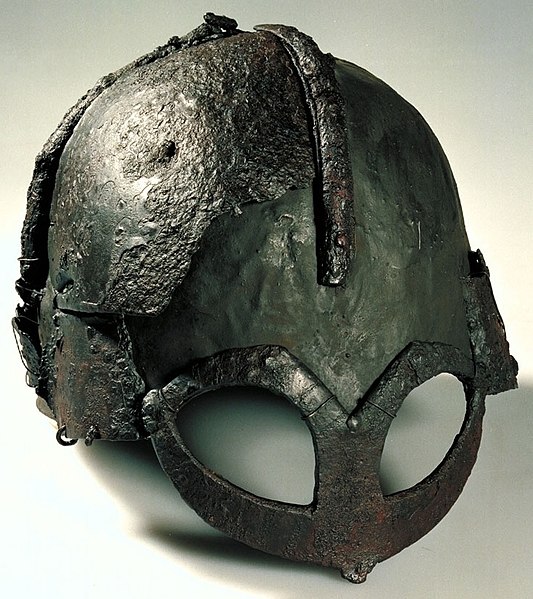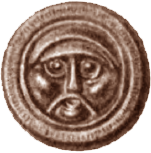The Anglo-Saxon poem Beowulf tells the story of Beowulf the Geat, who comes to Heorot, the hall of the Danish king Hrothgar, to deal with the monster Grendel (and then Grendel's mother); much later, Beowulf, now king of the Geats, slays a dragon, then dies. Many of the names of characters in the poem line up with names known from Scandinavian traditions; for example, Hrothgar's ancestor Scyld is a match for Skiold, and Hrothulf seems to correspond to Rolf (Kraki). The chronological setting of the poem is established as the early sixth century by the repeated accounts of a failed raid Hygelac, Beowulf's lord, conducts in Frisia -- accounts paralleled by historians such as Gregory of Tours. (See "Earliest References" page.) The magnificent early 7th-cen. ship-burial discovered at Sutton Hoo in England seems to dramatically connect the literary epic, with its description of Scyld's ship-burial, to the concrete reality of Anglo-Saxon life. Some other Anglo-Saxon texts (especially Widsith) show similar knowledge of apparently Scandinavian traditions, and the Northumbrian scholar Alcuin, writing at the end of the 8th century, pointedly criticizes excessive interest in songs about pagan kings, mentioning one by name, Ingeld (Hinieldus), who appears both in Beowulf and in Scandinavian sources. He complains, "What does Ingeld have to do with Christ?" (Ep. 124)

The status of Beowulf as a window onto 6th-cen. Scandinavian life, however, is bound up with the knotty problem of the poem's date. The sole manuscript witness to the text dates to about 1000 CE. Prior to the 1980s, there was a general consensus that the poem had been composed sometime between 650 and 800, or roughly "in the age of Bede." This would place it before the dramatic Viking incursions and subsequent settlement in the British Isles. Indeed, it seemed unthinkable that heroic tales about Danes and Geats could find an audience among Anglo-Saxons suffering from Scandinavian attacks. Conference proceedings from Toronto, published in 1981 (Chase), solidified a strain of skepticism about the basis of such "early" dating, resulting in much later suggestions for Beowulf's date, or simply agnosticism about the whole question. A later date for the poem would yield a very different cultural context, in which Scandinavian stories were being told at a time when Danes and other Vikings had firmly esconced themselves in Britain, reflecting perhaps the accomodations and negotiations of the age of Alfred the Great. In recent years, however, more systematic investigations of metrics, language, and the manuscript seems to be pushing back toward a pre-Viking Age date for Beowulf (Neidorf).

The site of Lejre on the Danish island of Zealand (Sjælland) has for a long time been traditionally identified as the site of Hrothgar's hall, Heorot. In sources such as the Chronicon Lethrense, it is seen as an ancient seat of Danish kings. Recent archaeological investigations have tended to confirm the importance of the site in early medieval times. Specifically, John Niles emphasizes the significance of an early hall built in the mid-6th cen., which went out of use in the mid-7th cen., at roughly the same time a major funerary tumulus (Grydehøj) was built; perhaps a generation later, another hall was erected nearby and used until the late 10th century. Archaeology continues to produce interesting results, although site director Tom Christensen's most recent account (2015) was published only in Danish (but see summary of contents in this review).

In the poem, Beowulf himself is not a Dane but a "Geat." The Geats are most commonly identified by historical linguistics as equivalent to the "Gautar" living in what is now Götaland in southern Sweden. Minority positions see some possible connection to the "Getae" of Classical Greek and Latin tradition (often in late Antiquity and the Middle Ages conflated with the Goths), or even the Jutes of Jutland in Denmark.

Garmonsway et al. provide an extensive collection of translated sources illustrating these correspondences.
(Names appearing in the Chronicon Lethrense are indicated with [CL].)

[M. H.]